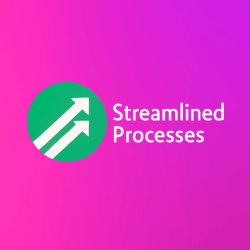For Cloud-Based Recurring Billing Software, see our main page here.
What Makes Cloud-Based Recurring Billing Software Different?
Recurring billing solutions have transformed over the last decade. Previously, small and medium businesses relied on spreadsheets and manual invoicing. But Cloud-Based Recurring Billing Software automates the entire cycle—from generating invoices to collecting payments and tracking subscriptions. It reduces human error, shortens billing cycles, and simplifies financial reporting.
Moreover, modern solutions are scalable. As your business grows, this type of software grows with it, supporting more customers, currencies, and products without reengineering your entire system. For example, SaaS companies like Dropbox and Netflix rely on cloud-based billing to handle millions of automated transactions every month.
Benefits of Using Cloud-Based Recurring Billing Software
This technology brings structure to a complex and time-consuming process. The benefits are substantial, especially for service-based and subscription businesses. Here are a few advantages:
- Automated Workflows: Reduce manual input by automating invoicing, payment collection, and dunning processes.
- Real-Time Reporting: Access real-time metrics such as Monthly Recurring Revenue (MRR) and churn rate for informed decisions.
- Flexibility for Customers: Offer multiple payment methods and billing cycles to suit different customer preferences.
- Global Scalability: Support multiple currencies and tax zones, which is essential for international growth.
Most importantly, it improves customer retention by making payment seamless. When billing becomes a non-issue, clients stay focused on your core offerings—not billing headaches.
Key Features to Look For in Recurring Billing Platforms
Not all platforms are created equal. Some are better suited for enterprise-level organizations, while others focus on startups and small businesses. When evaluating options, look for the following capabilities:
- Subscription Management: Tools that allow upgrades, downgrades, and plan changes without confusion.
- Retry Logic and Dunning Emails: Essential for minimizing failed payments and involuntary churn.
- Custom Invoicing: Include logos, notes, and specific terms for branding and contracts.
- Payment Gateway Integration: Support for Stripe, PayPal, Braintree, and others adds flexibility and security.
To illustrate, one SaaS client using Cloud-Based Recurring Billing Software with advanced retry logic reduced churn by 17% over six months. These small features have large impacts.
Cloud-Based Recurring Billing Software vs Traditional Billing
Traditional billing techniques involve spreadsheets, manual tracking, and separate accounting systems. In contrast, Cloud-Based Recurring Billing Software centralizes this information into one platform. The difference is significant in both efficiency and accuracy.
On the other hand, moving to the cloud does introduce some learning curves. Organizations may need to train staff on the new system, and integration with existing tools like QuickBooks needs careful planning. However, the long-term cost savings and time efficiency usually outweigh the transitional obstacles.
For example, one mid-sized IT consultancy saved over 40 hours a month simply by eliminating manual invoice creation and follow-ups.
How AI and Automation Enhance Recurring Billing Systems
Modern systems now include artificial intelligence and machine learning, enabling predictive analytics and behavioral billing insights. For instance, AI can forecast customer churn based on billing patterns, prompting preemptive outreach before cancellation occurs.
Automation improves consistency. For example, failed payment retries can be scheduled and escalated automatically without staff involvement. This ensures steady cash flow and fewer billing disputes. These capabilities free up teams to focus on growth and service, not admin tasks.
This article was created with the assistance of AI tools and reviewed by our team at Streamlined Processes LLC to ensure accuracy and relevance.
Industries That Benefit Most from Cloud-Based Recurring Billing Software
Certain industries rely on recurring billing more heavily, making automation essential. Below are some top sectors:
- Software-as-a-Service (SaaS): The need for monthly and annual plans makes this software indispensable.
- Telecom: Billing for usage, overages, and time-based plans is complex without dedicated tools.
- Education Platforms: Monthly access to digital learning often requires adaptable billing cycles.
- Fitness Memberships: Gyms and wellness centers use it to manage cycles, freezes, and renewals.
- Media and Streaming: Services like Spotify and Disney+ rely on stable, automated charge processes.
Each of these sectors has seen faster payment processing, reduced customer frustration, and better forecasting as a result of switching systems.
Challenges in Implementing Billing Automation
Despite the benefits, switching to Cloud-Based Recurring Billing Software isn’t without difficulties. Companies often struggle with:
- Data Migration: Moving billing history and customer details can be sensitive and slow.
- Custom Workflows: Businesses with unique pricing models need tailored setup and configurations.
- User Adoption: Staff need to be shown how to use and trust the new system.
However, these challenges are manageable when proper training and support are provided from the outset. A phased rollout can help test functionality on a smaller scale before full adoption.
FAQ: Your Burning Questions Answered
Is Cloud-Based Recurring Billing Software secure for handling payments?
Yes. Most providers comply with PCI DSS standards, offer data encryption, and provide fraud detection features.
Can it handle discounts, coupons, and promotions?
Certainly. Most systems support time-based and usage-based discounts that can be automated and tracked.
Will it integrate with my CRM or accounting tools?
In most cases, yes. Look for platforms that offer open APIs or native integrations with CRMs like HubSpot and accounting tools like Xero or QuickBooks.
What if my customers prefer annual billing over monthly?
No problem. Flexible cycle configurations are a core part of these systems. Your customers can select what works best for them.
Future Trends in Billing and Payment Automation
The next frontier in recurring billing includes deeper AI integration, blockchain for smart contracts, and adaptive billing that reacts to user behavior in real time. As customer expectations rise, businesses must respond with flexible and intuitive billing methods.
Additionally, sustainable billing practices are gaining popularity. Environmentally-friendly businesses are now using billing systems that minimize paper use and carbon footprint through digital processes and smarter analytics.
In conclusion, choosing the right system isn’t just about ease—it’s about strategic growth. A robust, cloud-based solution becomes part of your ecosystem, influencing retention, revenue, and team efficiency.
Follow us on Facebook here.

